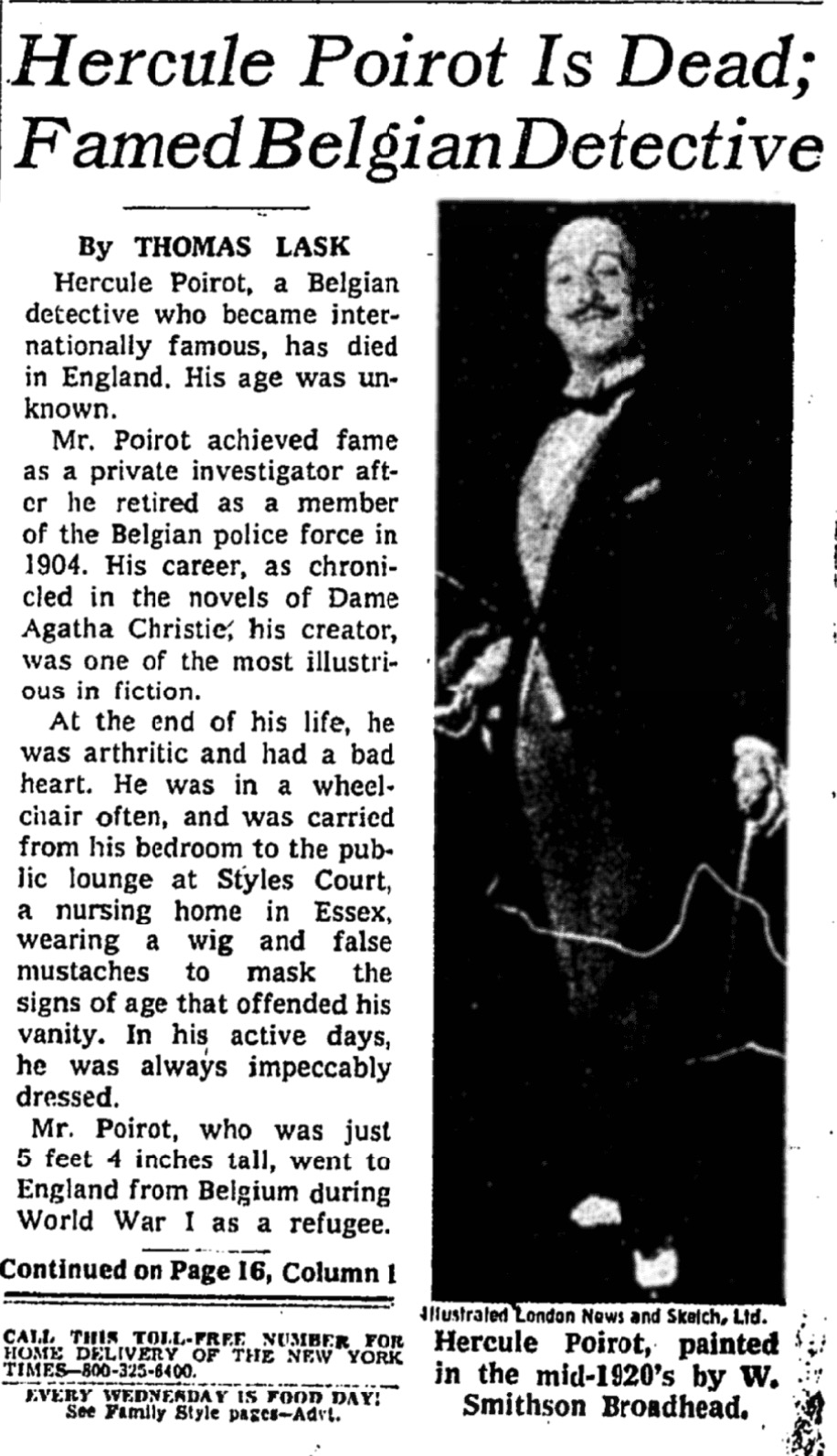© 2018 All Rights Reserved. Do not distribute or repurpose this work without written permission from the copyright holder(s).
Printed from https://www.damninteresting.com/curio/involuntary-indefatigability/

Only one fictional character has ever been honoured with a front-page obituary in The New York Times: Hercule Poirot, one of Agatha Christie’s two recurring detectives. On 06 August 1975, the headline read, “Hercule Poirot Is Dead; Famed Belgian Detective”. Two months later, the last Poirot mystery – Curtain – was released to the public. Christie, whose life was drawing to a close, had written Curtain in the 1940s as Poirot’s last case and locked it away until she realized that she could not write any more of his mysteries. Christie had long been personally burned out on her famous fictional detective; however due to his popularity, she had refrained from discarding him altogether.
Sir Arthur Conan Doyle—famed creator of Sherlock Holmes—also tired of his own popular protagonist, once writing “I have had such an overdose of him that I feel towards him as I do towards paté de foie gras, of which I once ate too much, so that the name of it gives me a sickly feeling to this day.” When Conan Doyle gave in to the temptation to murder the beloved character in 1893, public outrage was so vehement and sustained that the author eventually resumed writing Holmes stories under the pretense that the eccentric detective had merely faked his own death.
© 2018 All Rights Reserved. Do not distribute or repurpose this work without written permission from the copyright holder(s).
Printed from https://www.damninteresting.com/curio/involuntary-indefatigability/
Since you enjoyed our work enough to print it out, and read it clear to the end, would you consider donating a few dollars at https://www.damninteresting.com/donate ?
Holmes: Knew the facts.
Poirot: Did not know about the Times article. Thanks for the info!